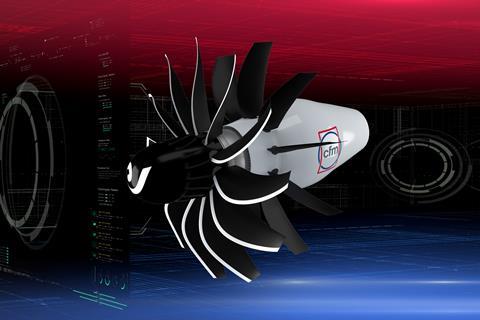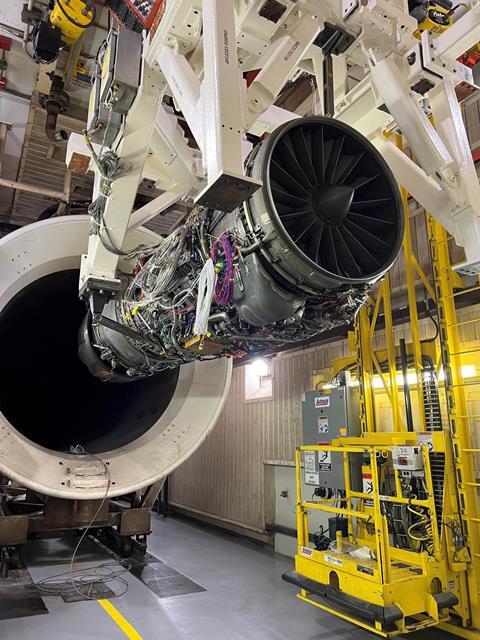GE Aerospace in 2025 plans to use two of the world’s fastest computers, both at US-government-funded research facilities, to study how its open-fan engine concept will integrate with an aircraft’s wings and other structures.
The studies are part of Ohio-based GE Aerospace’s ongoing effort to develop a more-efficient powerplant under the Revolutionary Innovation for Sustainable Engines (RISE) programme.

GE Aerospace on 18 November said the US Department of Energy (DOE) awarded it 840,000h “node hours” using two so-called supercomputers – one at Argonne National Laboratory in Illinois and the other at Oak Ridge National Laboratory in Tennessee.
GE Aerospace, working with partners NASA and Boeing, will use the machines to “model the integration of an open-fan engine design with an airplane, supporting the aviation industry’s efforts to develop more-energy-efficient technology”, GE Aerospace says.
The DOE, which funds the Argonne and Oak Ridge labs, awarded the computing access to GE Aerospace under a programme intended to advance promising technology.
“In this project, NASA, Boeing and GE Aerospace are engaging in a collaboration to investigate the challenge of integrating an open fan on an aircraft in a wing-mounted configuration, for which installation effects are a key risk to realising the efficiency gains associated with this propulsion architecture,” says the DOE’s award announcement. “The use of these models would allow for more-efficient and practical design optimisation for the open-fan aircraft installation.”
The RISE programme is led by CFM International, which GE Aerospace jointly owns with Safran Aircraft Engines. The partners say that through RISE they will develop an open-fan powerplant that is 20% more efficient than today’s turbofans. They are shooting to bring the engine to market in the mid-2030s, and for it to power new narrowbody jets expected to be introduced at that time by Airbus and Boeing.

Open-fan engines lack the nacelles and containment rings that surround the fans of traditional turbofans, which means less weight and drag and which allows engineers to give open-fan engines larger fans, all of which drives improved fuel efficiency.
But the lack of containment rings mean designers must find other means of ensuring open fans, in the case of engine failures, do not fling metal fragments into an aircraft’s cabin. One solution is to add shielding to an aircraft’s fuselage, though doing so can negate weight savings and efficiency gains.
“Now, engineers will be able to study the aerodynamics of an open fan mounted on an aircraft wing in simulated flight conditions. This allows the engine design to be optimised for additional efficiency, noise and other performance benefits,” GE Aerospace says. “Replicating a full-size integrated engine and airplane in the design phase would be impossible without the computational power of the newest supercomputing machines.”
The open-fan project remains in research stages, and its success will depend on CFM proving the design’s viability and efficiency.


























